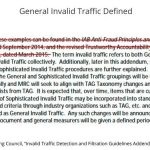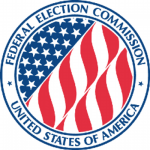FTC concerns pointers to stop Native advertisements From Crossing Into “Deception” Territory
agency publishes a “guide for business” so publishers do not confuse customers.

As so-called “native ads” have transform increasingly more in style critics have argued they’re effective as a result of customers can’t tell them apart from exact “content.” Proponents say, in contrast, that they provide a better person expertise and don’t disrupt enjoyment of content material.
The FTC has now stepped into the fray and issued tips for publishers and marketers to stop native advert formats and their presentation from running afoul of federal principles surrounding truth in advertising. namely the company has published Native promoting: A guide for trade to let publishers to understand what is going to and won’t be regarded as “deceptive” relating to native ads:
With the emergence of digital media and changes in the way in which publishers monetize content, online advertising referred to as “native merchandising” or “backed content,” which is regularly indistinguishable from news, function articles, product opinions, editorial, entertainment, and other regular content material, has transform more ordinary. In digital media, a publisher, or a licensed 0.33 celebration, can easily and inexpensively structure an ad so it suits the fashion and layout of the content into which it’s integrated in ways now not previously available in conventional media. The effect is to mask the signals consumers usually have relied upon to recognize an promotion or promotional message.
The FTC appears at the totality of the presentation of the ad in context to decide deceptiveness. A finding of consumer deception will primarily be case by using case.
The FTC has said that it “will in finding an advertisement deceptive if the ad misleads cheap customers as to its nature or source, including that a celebration other than the sponsoring advertiser is its source.” A secure rule of thumb is that advertisements should be naturally labeled as commercial or ad content:
- From the FTC’s point of view, the watchword is transparency. An advertisement or promotional message shouldn’t suggest or indicate to shoppers that it’s anything instead of an advert.
- Some native commercials may be so certainly industrial in nature that they’re unlikely to lie to customers even with out a explicit disclosure. In different instances, a disclosure could also be necessary to be sure that customers needless to say the content is promotion.
- If a disclosure is necessary to prevent deception, the disclosure should be clear and distinguished.
consistent with more than one research, native ads had been shown to be efficient. different data indicate, on the other hand, that customers are continuously confused and don’t distinguish between native commercials and articles or content material. certainly, some publishers had been self-consciously seeking to blur the line between content and native ads without technically crossing over into “deceptiveness.”
the brand new FTC e-newsletter and tips are putting the business on discover that it may be ready undertake enforcement movements towards native advertising that seems too close to content material.
(Some images used beneath license from Shutterstock.com.)
advertising Land – web advertising news, methods & pointers
(40)















